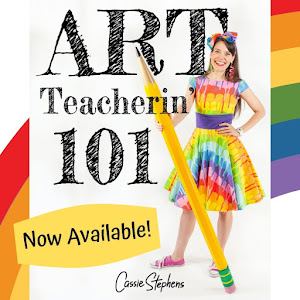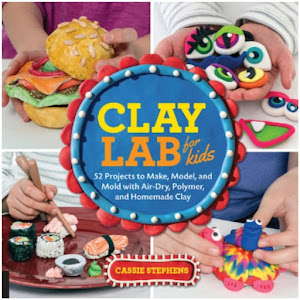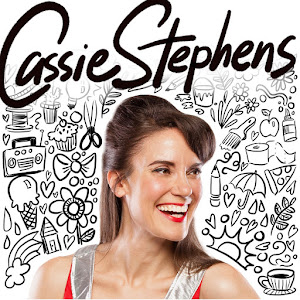 |
| My kids busted out the most adorable clay pieces this year, not gonna lie. This project, created by my fourth graders and inspired by the painted elephants of India, was a fave of mine. |
Each year in my art room, I like to focus on a particular country and/or continent and introduce the kids to the sights (lots of groovy cast-off souvenirs from the thrift store), sounds (a wee introduction to the languages) and tastes (this year that involved making candy sushi) of that place. The previous school year, we "traveled" to Europe with an emphasis on Paris. At the end of that particular school year, I had a third grade student ask, "Can we please travel to India next year?!"
Photos from National Geographic taken during an annual Elephant Festival in Jaipur, India. Elephants have long been revered in India which has helped them survive in greater numbers than any other country in Asia. That being said, there are roughly 3000 elephants currently held in captivity as apart of illegal animal trafficking. It sucks how, as humans, if we can capture and keep something, no matter how big or how much respect we claim to have for it, we will. Thankfully, the elephants shown in these photos live in a large open area created just for them.
I agreed to the little dude's request, "Sure! Let's learn about India!" and then, weeks later, turned my art room into this...aka NOT India. At our registration night preceding the first day of school, after viewing my art room, said student marched up to me, totally ticked.
"You said we were gonna learn about India!"
Me (realizing my Big Fat Hair Mistake and thinking fast): "Oh! We are! We're learning about Asia this year."
"Asia IS NOT India."
Me (noting that it was a good think we'd be studying geography): "Well, India is in Asia. So we'll cover it, I promise."
Little Dude, crossing arms: "We better!"
And, Every. Single. Time. I saw that kid, I swear to you, he asked me, "When are we gonna learn about India?"
So then I got an idea. Usually when I introduce the kids to a country that I've not been to, I do a whole lotta homework. But here I had a kid that was not only Indian-American but had also been to India several times! So I asked him to put together a list of the Top 10 Most Important Facts We Should Know about India. Days later, he returned with a list of 20 things as well as a large bag full of beautiful saris and other clothing.
With my student ready to present, I had to come up with a coordinating lesson. I didn't want my student to simply present to his classmates and then not have a project tie-in. It was then that I remembered this awesome Painted Elephant lesson created by an art teacher buddy of mine (hey, Debbie!) featured in Arts and Activities a couple years ago.
(In case you didn't know, my classes are 30 minutes in length. Here's what we did the first day:)
1. Divide your clay into two equal spheres (I stopped saying "BALLS" a loooong time ago, ahem) and make two pinch pots of relatively equal size. In an upcoming post, I'll share with you how I teach pinch pot making. Until then, stick your thumb in the sphere, take it out and pinch the sides evenly.
2. Crumple up a page from one of those countless art supply catalogs you are hoarding and stuff inside one pot.
3. Argh! It's a Monster with Poor Dental Hygiene! Use an old toothbrush and a cup of water to slip and score the rim of both pinch pots. Place one pot atop the other.
4. And close by smearing the clay. If there are gaps, seal those with a clay Band-Aid or a smashed piece of clay that can seal those gaps.
5. Roll that pot back and fourth until it is smooth. Yeah, I know there's paper inside. It's there to stay. Now, wrap a damp paper towel around that bad boy, pop it into a ZipLock bag with your name on it and I'll smell ya later.
6. The next art class, after my student's chat, we were back at it. I gave a super rough example as to how I would make an elephant. However, I emphasized that it was how I would do it...you're a different and much more creative artist than me. I know you'll think of something way better. Smash a sphere of clay into a cookie size for the face. Cut another smashed sphere of clay in half for the ears.
Poor elephant staring at his disembodied legs. Explains the surprised expression.
7. With rulers on the tables, the kids were requested to make four legs as thick as a hot dog and 2" in length. Heads were attached to bodies but we held off on the legs. At the end of Round 2, we put what you see above in the bags. By the way, a whole lotta kids didn't get that far. No worries. The kids know art class is super short and are used to our little sing-song: "Art class is Oooh-ver, But I'm not finished yet!, That is Oooh-kay, We'll finish next time!"
8. The following class, the kids were ready to add all the fun details to their elephants. I printed off those pics from the National Geographic website and placed them on tables. This really inspired the kids. One thing I pointed out was how many of the elephants were draped in fabric. We looked at the lovely fabrics of the outfits my student brought in. I had tons of textured fabrics on the tables (from doilies to burlap and placements) and showed this kids how to pound the clay onto the texture. this texture could then be used for the fabric on the elephants back. Notice that the clay is super thin. This is because it will be attached to another piece. If it were a thick piece attached to another thick piece, it would explode in the kiln.
9. On our fourth and final day, the kids were allowed to use whatever amount of clay they needed to finish. They added baskets, jewelry, babies, umbrellas, you name it. Once the legs were attached to the bottom, I jabbed a bunch of holes to prevent that sphere from exploding (because an enclosed piece of clay will blow up). Again, we left the newspaper inside. It didn't harm the kiln or the firing.
I let these guys dry a long time. Like a week and a half. My room was pretty warm and dry due to the constant running of the kiln. But I wasn't taking any chances with these guys exploding.
When this student's umbrella proved to be too top heavy and fell off, we improvised with this drink brolly. She said the holes in the ears of her elephant were going to hold her earrings. Genius.
Once these guys were out of the kiln, the kids were given two art classes to glaze them (although some took a class longer). I give the kids two brush sizes: medium and The World's Smallest Paint Brush. I encourage them to use that wee one for the tiny details and I think they did a good job of that. Also, I am in love with Mayco's Stroke and Coat glazes. I give the kids a wide variety of colors and they love them. Two coats gives a great shine and the color is very vibrant.
Some students opted not to have their elephants so brightly colored. Just a bit of blue eyeshadow to accent my eyes, thank you very much.
And other kids took it to the extreme. I love that bright yellow with the orange earrings!
 |
| This girl may have worked on her elephant forever. But look at it! It's amazing! From the basket to the detail of the baby, such awesomeness. |
On our last day of All-Things-India, our kid-presenter told us a bit about the clothing he brought. He explained that some of the clothing would be worn at an Indian wedding and that those were big parties that lasted for days.
Me: Oh! I wanna come! Will you invite your favorite art teacher to your wedding party, please?!
Kid-Presenter: Haha! No! You won't be around any more. You'll be old! And probably dead.
Wow. Comments like that make me happy it's summer. Time to live it up before the Grim Reaper arrives!
Until next time, go make yo'self a painted elephant, they're super fun, ya'll!












































































